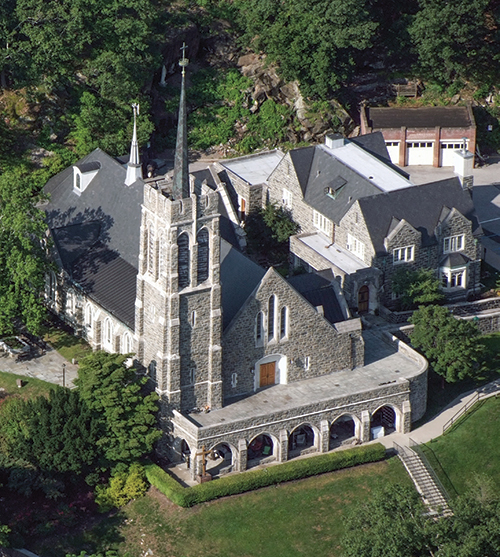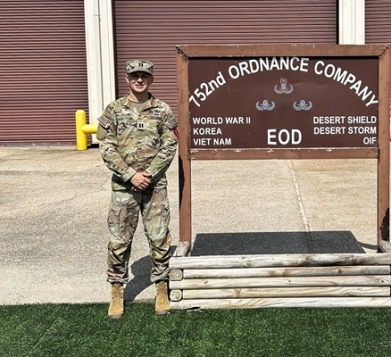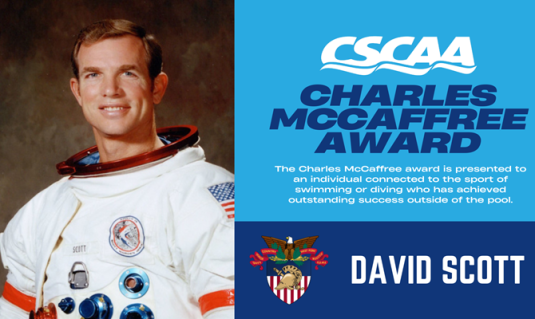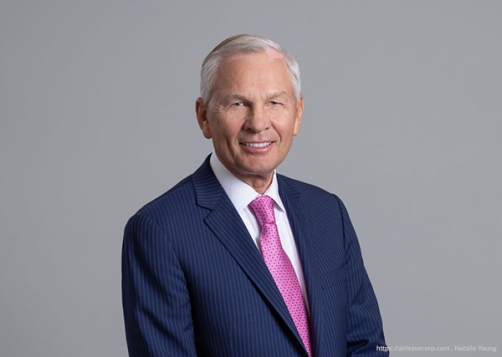By Martin H. “Jay” Joyce ’74, Guest Author
Only four years after the Academy’s founding, President Thomas Jefferson appointed the first Catholics to the Corps of Cadets, French-speaking Americans from the newly acquired Louisiana Territory. Although the Archdiocese of New York was established shortly thereafter, in 1808, the number of practicing Catholics in the West Point area was so small that no member of clergy was assigned.
Upon occasion, a priest from Cold Spring, New York, about a mile upstream across the Hudson River, would come to West Point for Catholic services. By 1875, Sacred Heart Church in nearby Highland Falls, New York was built, and the West Point Catholic community became a mission of Sacred Heart. Catholics stationed at West Point contributed roughly 40 percent of the original funds needed for the new church.
By the late 19th century, Catholic services were held at the “Soldiers’ Chapel,” located near the present site of Eisenhower Hall. In 1890, Monsignor Cornelius G. O’Keeffe was assigned as pastor to Sacred Heart. An accomplished linguist and a personable figure, O’Keeffe quickly gained acceptance from the military leadership of West Point.
In August 1896, O’Keeffe wrote to Colonel Oswald H. Ernst (USMA 1864), 24th USMA Superintendent, requesting permission to build a Catholic chapel at West Point near the Ordnance Laboratory. O’Keeffe’s request was endorsed by Academy leadership, and, in early 1897, President McKinley’s administration licensed New York Archbishop Michael Corrigan to build. However, when the public became aware that a Catholic chapel was to be built at West Point, McKinley received a flood of protests and the license was consequently revoked, with direction that the issue should be taken up in Congress. Church officials quickly took up their cause in the House of Representatives. Despite considerable discussion, the House passed a bill in June 1898 to build a chapel, and Senate approval quickly followed. President McKinley signed the bill into law on July 8, 1898. A new license was issued in 1899, under which the Archdiocese of New York was named owner and the party responsible for raising the funds to build and maintain the chapel.
O’Keeffe’s desired location for the new chapel was near the Cadet Area, similar to the location of the original Cadet Chapel (referred to now as “the Old Cadet Chapel”). However, Academy administration had other plans for this area and chose the Catholic chapel’s present location, overlooking the intersection of Washington and Stony Lonesome roads.
The new chapel was designed in Norman architectural style by the New York-based firm of Heins and LaFarge, and it was completed within a year, using stone from a quarry behind the site. It was built to accommodate 275 people, more than adequate for the West Point Catholic community at the turn of the century.
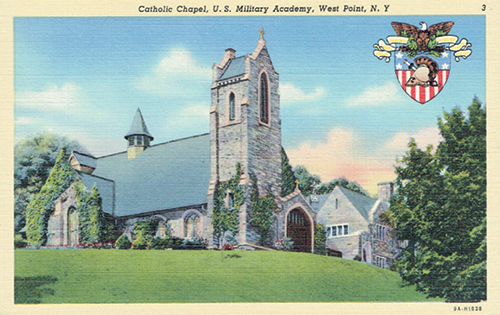
Most Holy Trinity Chapel (MHT) was dedicated on June 10, 1900. New York Auxiliary Bishop John Farley was the celebrant, and the ceremonies were attended by Secretary of War Elihu Root and Colonel Albert Mills (USMA 1879), the Superintendent at the time. Father George DeShon (USMA 1843), cadet roommate of Ulysses S. Grant, delivered the homily. DeShon resigned from the Army in 1851 and was ordained a Catholic priest in 1855, the second USMA graduate to become a priest.
MHT continued to operate as a mission of Sacred Heart Church under O’Keeffe until it became a standalone Archdiocese of New York parish in 1926. Father John Langton, a former Army chaplain during World War I and an assistant pastor at Sacred Heart Church, was appointed MHT’s first pastor.
Funds to maintain the chapel were a continual problem. Beginning in 1936 and continuing through at least 1950, the Guild for MHT held an annual military ball to raise funds for the chapel’s maintence. Scheduled following the Army-Notre Dame football game in Yankee Stadium (and later similar games), the ball was held in the grand ballroom of the Hotel Astor in Times Square. It was attended by nearly the entire Corps and was one of the social events of the season.
MHT celebrated its 50th anniversary in 1950, and New York Archbishop Francis Cardinal Spellman presided at a Mass at MHT in honor of the jubilee. By the mid-1950s, MHT needed more room to accommodate the increasing size of the Corps. Using stone from the demolished Lusk Observatory to match the original exterior stone, MHT was expanded to its present capacity of 550 by 1960, complete with a new tower and steeple, a choir loft, baptistry, and excavation for a basement activity room. A primary feature of the redesign was stained glass windows showcasing “soldier saints,” distinguished figures who have some relationship to the military. These windows include St. Joan of Arc, St. Michael (patron saint of military aviators), St. Maurice (patron saint of the Infantry) and St. Barbara (patron saint of both the Field and Air Defense Artillery).
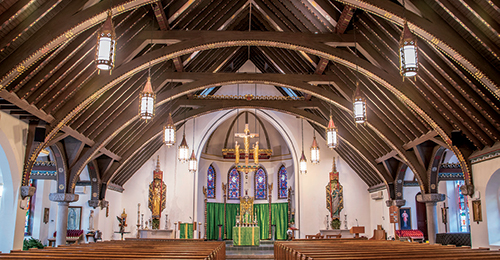
The newly renovated chapel was rededicated in September 1959. Once again, Spellman presided over the ceremonies. In addition to being Archbishop of New York, he was the Catholic military vicar for the Armed Forces and had visited MHT on numerous occasions. In 1967, Spellman became the first clergy member to receive the Sylvanus Thayer Award, presented by the then Association of Graduates in recognition of his “unswerving…loyalty to his country…important contributions to the development of the moral strength of our fighting forces and of his continuing paternal concern for American servicemen and women of all faiths.”
In 1977, the first military chaplain was assigned to West Point, signaling the beginning of a long transition from civilian clergy (Catholic, Protestant, and Jewish) to Army chaplains. In 1999, following considerable discussion, a revised license was issued, under which the Archdiocese of New York would retain ownership of MHT chapel but lease it to the federal government, which would assume responsibility for its upkeep. The Army Chaplain Corps assumed responsibility for staffing chaplains, supported by the Archdiocese for the Military Services.
A significant milestone was realized in 2003: Chaplain (Major) Jerry Deponai ’74 became the first West Point graduate to serve as pastor of MHT. Chaplain (Major) Paul K. Hurley ’84 succeeded Deponai in 2006. Later, in 2015, then Colonel Hurley was promoted to major general and became the Army’s 18th Chief of Chaplains, only the second West Point graduate to hold this position since it was first established in 1920.
MHT gained international recognition in 2016 when it returned the San Pedro Bell to the Church of Saints Peter and Paul in the Philippines. The bell had been sent to MHT in 1915 as Spanish American War booty by former USMA Superintendent Major General Thomas Barry (USMA 1877). It had been stored out of sight and forgotten for many years until 1982, when it was mounted outside the chapel by Father James Tubridy, then pastor of MHT. In 2015, the Filipino Catholic Church asked for its return, which Lieutenant General Robert Caslen ’75, USMA Superintendent at the time, approved. The San Pedro Bell left MHT in April 2016 with a blessing and much fanfare. A few months later, the bell was rededicated in its rightful home in Bauang, La Union, Philippines, to even greater celebration.
Today, MHT continues as the Academy’s longest-serving house of worship in continual use and as the only dedicated Catholic chapel at any of the nation’s service academies. For over a century, it has served as a spiritual home for the Catholic members of the Long Gray Line, Academy faculty and staff, and their families. Today, the congregation includes about 30 percent of the Corps of Cadets, 150–250 families, and many other Catholic service members stationed at West Point.
In the words of the Cadet Prayer, written in 1922 by USMA Chaplain Clayton Wheat, Most Holy Trinity—along with West Point’s other houses of worship—continues to help the Corps of Cadets, as well as all West Point graduates…to maintain the honor of the Corps untarnished and unsullied and to show forth in our lives the ideals of West Point in doing our duty to Thee and to our Country.
Jay Joyce graduated from West Point in 1974. He is the author of Postmarked West Point: A U.S. Postal History of West Point and its Graduates (2021), and Duty, Honor, Faith, & Country, an Illustrated History and Guide to Most Holy Trinity Chapel (2023). He will soon publish The West Point Post Office, 1815–1981, Keeping It All in the Family—Nepotism, Paternalism, Political Patronage…and Dedication to the Corps!
What do you think? Click here to answer 3 questions.

